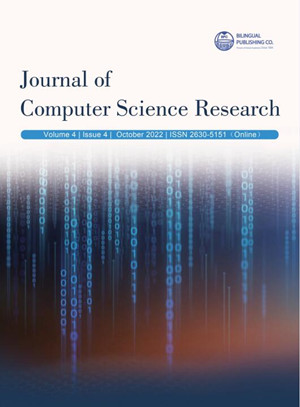
Сomputational Experience Optimization of Colors in Complex Fractal Images in Carpet Design Using the Simplex Method
DOI:
https://doi.org/10.30564/jcsr.v4i4.5215Abstract
This article proposes a new approach based on linear programming optimization to solve the problem of determining the color of a complex fractal carpet pattern. The principle is aimed at finding suitable dyes for mixing and their exact concentrations, which, when applied correctly, gives the desired color. The objective function and all constraints of the model are expressed linearly according to the solution variables. Carpet design has become an emerging technological field known for its creativity, science and technology. Many carpet design concepts have been analyzed in terms of color, contrast, brightness, as well as other mathematical concepts such as geometric changes and formulas. These concepts represent a common process in the carpet industry. This article discusses the use of complex fractal images in carpet design and simplex optimization in color selection.Keywords:
Fractal, Optimization methods, Simplex-method, Geometric transformations, Computer graphics, Pascal's triangleReferences
[1] Bondarenko, B.A., 2010. Generalized Pascal Triangles and Pyramids, their Fractals, Graphs, and Applications – USA, Santa Clara: Fibonacci Associations, The Third Edition. pp. 296.
[2] Bondarenko, B.A., 1991. Generalized triangles and Pascal pyramids, their fractals, graphs and applications. Discrete Mathematics. 3(3), 159-160.
[3] Nazirov, Sh.A., Anarova, Sh.A., Nuraliyev, F.M., 2017. Fundamentals of Fractal Theory, Tashkent: Navruz. Monograph. pp. 128.
[4] Mandelbrot, B., 2002. Fractal geometry of nature. Moscow: Institute of Computer Research.
[5] Anarova, Sh.A., Nuraliev, F.M., Narzulloev, O.M., 2019. Construction of the equation of fractals structure based on the rvachev r-functions theories. Journal of Physics Conference Series. 1260(072001), 1-9.
[6] Nikolaev, E.V., 2016. Fractal Manifesto. Collection of articles / Per. From English, French St. Petersburg: “Strata”. pp. 156.
[7] Ponder, C., Gregory, B., Griffing, E., et al., 2019. Life Cycle Comparison of Carpet Dyeing Processes. Journal of Advanced Manufacturing and Processing. 1(e10012), 1-6. DOI: https://doi.org/10.1002/amp2.10012
[8] Smith, J.H., Rowland, K., Moslehi, S., et al., 2020. Relaxing Floors: The Fractal Fluency of the Built Environment. Nonlinear Dynamics, Psychology and Life Sciences. 24, 127-141.
[9] Nuraliev, F.M., Anarova, Sh.A., Narzulloev, O.M., 2019. Mathematical and software of fractal structures from combinatorial numbers. 2019 International Conference on Information Science and Communications Technologies (ICISCT), Tashkent, Uzbekistan. pp. 1-4.
[10] Malea, C.I., Nitu, E.L., 2020. Optimization of the technological process and equipment of complex profiled parts. IOP Conference Series: Materials Science and Engineering. 916(012058), 1-13.
[11] Zak, Yu.A., 2014. Applied problems of multiobjective optimization. Economics. pp. 455.
[12] Ghoreishian, S.M., Maleknia, L., Mirzapour, H. et al., 2013. Antibacterial properties and color fastness of silk fabric dyed with turmeric extract. Fibers and Polymers. pp. 201-207.
[13] Alevras, D., Padberg, M.W., 2001. Linear Optimization and Extensions: Problems and Solutions PDF. New York: Springer. pp. 451.
[14] Dariush, S., Mehdi, H., Hamed, A., et al., 2014. Jacquard pattern optimizing in weft knitted fabrics via interactive genetic algorithm. Fashion and Textiles. pp. 1-9.
Downloads
How to Cite
Issue
Article Type
License
Copyright © 2022 Author(s)

This is an open access article under the Creative Commons Attribution-NonCommercial 4.0 International (CC BY-NC 4.0) License.




 Fakhriddin Nuraliev
Fakhriddin Nuraliev






